
Western Sahara activist Aminatou Haidar in Arrecife airport on Lanzarote. Photograph: DESIREE MARTIN/AFP/Getty Images
Western Sahara's most prominent human rights activist has gone on hunger strike at a Spanish airport after being expelled from her home country by Moroccan authorities.
Aminatou Haidar, who is viewed by her supporters as the "Sahrawi Gandhi", was deported to Lanzarote from the disputed territory of Western Sahara on Saturday. Morocco has occupied the former Spanish colony since 1975, refusing a say on independence to the indigenous Sahrawi population, including some 100,000 people still living in refugee camps in the desert in south-western Algeria.
Haidar, a 42-year-old single mother, was detained at the airport in Western Sahara's administrative capital, Laayoune, on her return from the US, where she was awarded the Train Foundation's Civil Courage prize of $50,000 for her struggle for the Sahrawis' right to self-determination. After refusing to declare her nationality as Moroccan on the airport arrival form, the police confiscated her passport and she was flown to the nearby Canary Islands.
Haidar told the Guardian by telephone that Spain was "complicit" in her predicament, both for admitting her to Lanzarote and then refusing to let her leave.
"I will carry on my hunger strike until the Spanish government accepts its responsibilities and allows me to return to my homeland, where my children live … or I die," she said.
Prison in Western Sahara was preferable to detention in Spain, she added.
Haidar has wide experience of incarceration. In 1987, aged 20, she was "disappeared" and tortured by the Moroccan secret police for more than three years for advocating independence. In 2005 she was jailed for seven months after being beaten by a Moroccan policeman during a demonstration protesting against the Moroccan occupation.
The Spanish foreign ministry said could not allow Haidar to return to Laayoune because she had no passport. The Moroccan government, which considers Western Sahara to be its southern provinces, even though this has no foundation in international law or formal recognition from any other country, has denied any wrongdoing. Instead, it has accused Haidar of treason and of being agent of the Polisario Front, a Sahrawi nationalist movement that fought a 16-year desert war against Morocco with backing from Algeria.
The conflict ended in 1991, with both parties agreeing to a UN-sponsored referendum on self-determination – including an option for independence – for the Sahrawi people. But Morocco has consistently blocked the vote, and the Polisario remains in exile in Algeria, behind a massive sand wall manned by tens of thousands of Moroccan soldiers.
In recent years King Mohammed VI has said independence is no longer on the table, with autonomy now the best available option for Sahrawis. On 6 November, in a speech marking 34 years of Moroccan presence in Western Sahara, he hinted at harsher action towards anyone still questioning the claim of sovereignty.
"One is either a patriot, or a traitor," he said. "Is there a country that would tolerate a handful of lawless people exploiting democracy and human rights in order to conspire with the enemy against its sovereignty, unity and vital interests?"
The expulsion of Haidar, who was also awarded the 2008 Robert F Kennedy human rights prize for her struggle, is part of a wider crackdown on Sahrawi activists. On Monday Human Rights Watch condemned the Moroccan government for blocking "unauthorised" visits by foreigners to the homes of Sahrawi campaigners in Western Sahara. Seven other Sahrawi activists being held by Morocco after visiting the Polisario camps in October have been described as prisoners of conscience by Amnesty International.







 Email
Email




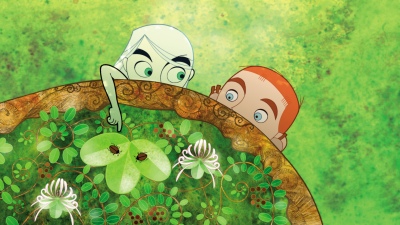
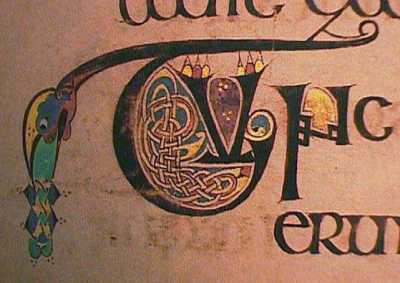
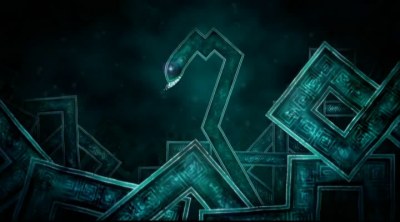




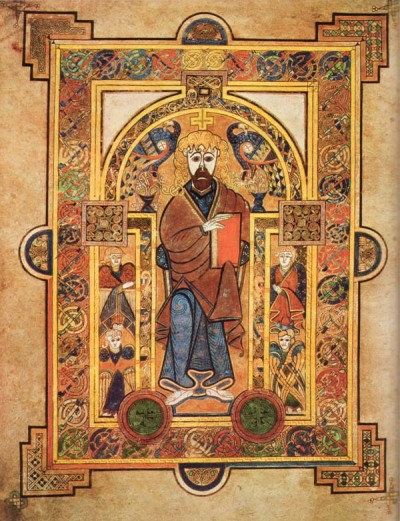
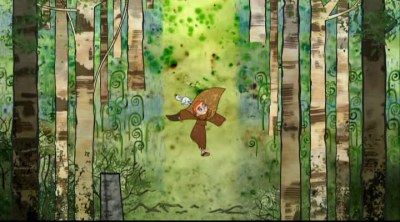
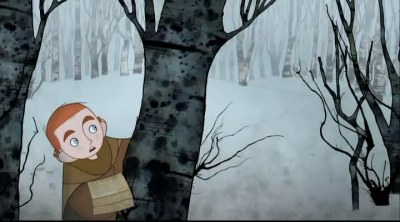

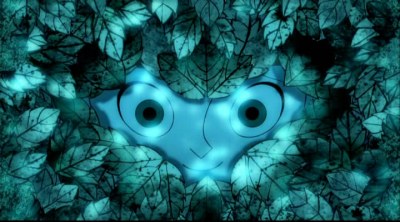
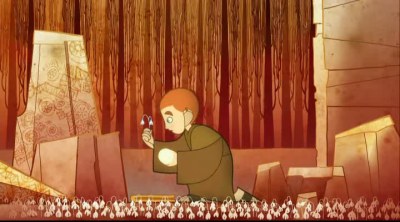
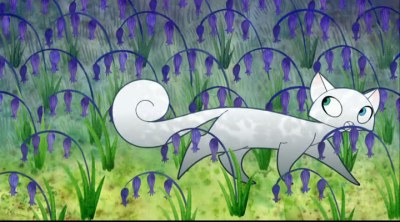
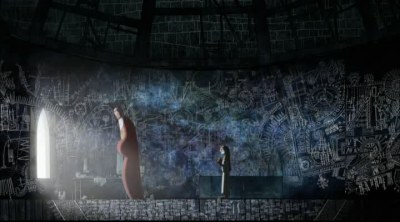

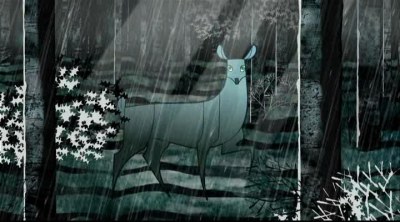
September 21, 2009 at 2:17 pm
Well that certainly was lush. Each screen cap is overwhelming. I think I’ve been trying to write this comment for an hour now.
Your Deleuze quote is delicious. lelangir said it differently, but he and I (and Deleuze apparently) agree that one needn’t look to a ‘deep’ subject the create a deep experience. I can easily have such an experience watching K-ON! as much as anything else.
In the case of this work, could it be that the thematic expression — the real work in it, is intended to reside less in the narrative, but more in the images and their motion? It seems like an obvious point, but I hope you know what I mean.
September 22, 2009 at 5:46 am
Fascinating stuff. I have an amateur interest in illuminated manuscripts, especially the works preserved by Irish monks, so this is definitely something I’ll have to check out.
For a cross-cultural look, have you seen anything done for the Qu’ran? Islam prohibits images of the prophets, so what artists did instead was turn Arabic itself into a work of art– a twisting, complex, utterly beautiful work of art. I recommend looking into it.
September 22, 2009 at 1:49 pm
@ghostlightning
I think Deleuze’s exact quote is “philosophy needs a non-philosophy that comprehends it”, in this case the characters of the film finds philosophy by interacting with the nature, and not confined to the walls of the abbey. I guess it’s possible to find deep things in just about anything, including K-on!, although different people will get out different things (i.e. I didn’t think much of K-on…)
Yea, it’s much more expressive visually than narrative, although to be honest the story was bit too much lacking imo. Kind of like Ponyo, but in this case it is bit harder to forgive for me. It’s a shame really because it is visually just so strong.
@2DT
Haha, I’m really surprised that you seem to know a little about everything I touch on, from Deleuze/nietzsche, Tasha. I am aware of the history of Qu’ran but not terribly familiar with the actual images and texts in it.
And yes, I highly recommend checking this film out, especially if you have intersted in illuminated manuscripts =D
September 22, 2009 at 6:45 pm
Just finished this (oh joys of the internet age, that such thing can be readily found) and am very pleased. Personally I was quite happy with the simplistic story structure – although it felt a bit too hard on WallMan at times. I did like Aisling’s retreat from Brendan a great deal – one of those unexplained but utterly right developments.
Anyway, enjoyed your points about intricacy a lot too, and the succession of images from the oak tree scene.
I was thinking that a lot of the moods/places in the film involved heavily dominant colourschemes which, to me at least, mean a very different way of experiencing intricacy from how I imagine staring into depths of colour in the book. Most frames had one scheme going on, and one doesn’t always have time to stare deeply into it to discover the layers, but the animation leads into the next scene in a manner which makes it feel like an exploration of the same scheme. Well, I’m getting a bit incoherent, but this was gorgeous and a very fine recommendation.
September 23, 2009 at 10:12 am
Yay my recommendation worked!
And yea, I love their colour schemes too. Each frame is so well considered, I wish more studios would put more efforts too.
September 24, 2009 at 6:36 pm
I wanted to check this out but the book is $40 on amazon, a bit pricey for my walletbook. Maybe my patience will pay off!
September 24, 2009 at 7:01 pm
I’ve been lurking from time to time as I found out we share some anime titles favs-wise , plus you always write thoughtful commentaries.
I knew nothing of this little jewel of animation, for a medieval fine arts students like me this look like a treat indeed. I’m spamming your post to some pf my friends too XD.
Thank you for blogging!
September 25, 2009 at 7:46 pm
@Cello
I hope you meant blu-ray disc, because $40 is quite a BARGAIN for the price I’d pay for the real book!
@elianthos
Yay another lurker de-lurking himself ^_^
Thanks for the kind words and I’m glad my posts have been somewhat amusing. Feel free to de-lurk time to time and fill up my lonely comment box =)
September 25, 2009 at 9:33 pm
You’re welcome XD, I bow to your taste and your maind. ). Perfect timing, as I watched 1001 nights yesterday (oh, my, the Gustave Moreau-esque + sprinkling of Disney Fantasia’s sabbath sequence visuals . And a bit of Kanashimi no Belladonna too, especially in the ’simple sketches moving and morphing’ moments)
). Perfect timing, as I watched 1001 nights yesterday (oh, my, the Gustave Moreau-esque + sprinkling of Disney Fantasia’s sabbath sequence visuals . And a bit of Kanashimi no Belladonna too, especially in the ’simple sketches moving and morphing’ moments)
Forgive my typos and possibly unclear wording btw, I’m good at drawing but bad at typing. Moreover, English is my secondary language only.
I’ve spotted Fantascope Tylostoma among your recent viewings (review coming about this title too, yes?
What a treat.Possibly Even more engaging as I was watching it well after midnight , (a bit of altered… self-awareness(?) helped the mind-trip I guess? I felt like I was being sucked in and dreaming along with the characters, so vividly ^_^;; )
Back to The Secret of Kells. Is indeed visually pleasing and different, chara design – aptily retro – matches backgrounds and Celtic patterns well , plus I love the OST. . She’s looking forward to -ahem- sampling it).
. She’s looking forward to -ahem- sampling it).
I can only hope Buena Vista International is planning for distribution here in Italy (been spamming this movie to my Medieval Archaeology college professor and plan to notify her colleagues too
—
Thanks again for blogging and sharing your thoughts with us.
P.S.: I’m a ’she’ XD
September 25, 2009 at 9:42 pm
EDIT: digressing some more on Yoshitaka Amano, I’m being irresistibly drawn to this right now http://anidb.net/perl-bin/animedb.pl?show=anime&aid=6203
. I hope someone will sub it ^^
Does Fantascope Tylostoma feature some dialogue or nothing at all? Just to know if I can watch it raw ^^
September 26, 2009 at 1:28 pm
Altered state is the best state to be in when watching artsy stuff like Fantascope =D. Your body needs to be relaxed, to feel those colours, movements and lines with your body, and just tired enough for your mind to not think too much, untie our way of thinking, and just connect to the imagination.
As for Fantascope, it has lot of dialogues, but I watched it raw anyway. Of course I didn’t understand the details but I think it’s better to watch it raw than not watch it at all!
And I hope your professor and colleagues enjoy the film too. And thank you again for the kind words, really makes my efforts worthwhile!